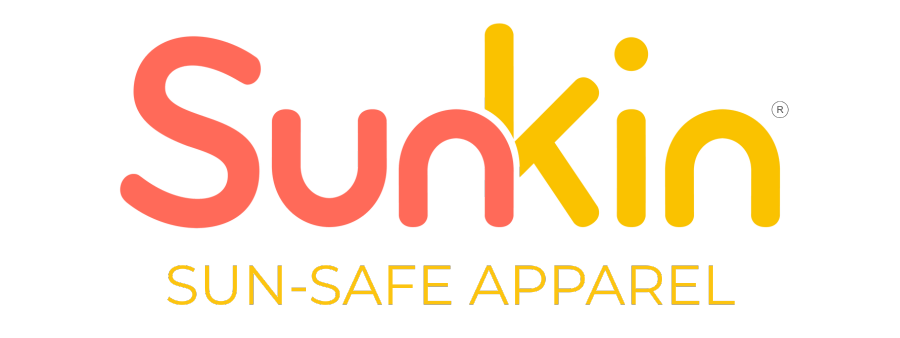
What's UVA and UVB?
UVA vs UVB Explained: What’s the Difference & How to Protect Your Skin
Sunlight is essential for life—it helps regulate our sleep, boosts our mood, and stimulates vitamin D production. But not all rays from the sun are safe. Two types of ultraviolet (UV) radiation reach the earth’s surface: UVA and UVB. Understanding their differences is the first step to protecting your family’s skin health.
In this guide, we break it down in the warm, approachable SunKin style: smart sun-care, made stylish.
What Is UV Radiation?
Ultraviolet (UV) radiation is a form of electromagnetic energy emitted by the sun and artificial sources like tanning beds. Invisible to the naked eye, UV rays fall just beyond the violet end of visible light—hence the name ultraviolet.
There are three types of UV rays:
-
UVA (long-wave)
-
UVB (medium-wave)
-
UVC (short-wave)
Only UVA and UVB reach the Earth’s surface; UVC is absorbed by the ozone layer.
While both UVA and UVB can harm the skin, they do so in different ways. Let’s look closer.
UVA Rays: The Silent Skin Agers
UVA rays account for about 95% of the UV radiation reaching Earth. These rays:
-
Have a longer wavelength (315–400 nm)
-
Penetrate deep into the skin (dermis)
-
Are present year-round, rain or shine
-
Can pass through glass (yes, even your car window)
Impact on skin:
-
Trigger premature aging: wrinkles, sagging, sun spots
-
Damage collagen and elastin
-
Initiate DNA changes that may lead to skin cancer
Why they matter: UVA rays don’t cause a visible burn, so they often go unnoticed. But their cumulative effect is significant. It’s why daily sun protection matters, even when it’s cloudy or you’re indoors near windows.
UVB Rays: The Sunburn Culprits
UVB rays make up only 5% of the UV rays that reach us, but they pack a punch:
-
Have a shorter wavelength (280–315 nm)
-
Affect the skin’s outer layer (epidermis)
-
Intensity fluctuates with season, altitude, and time of day
-
Do not penetrate glass
Impact on skin:
-
Cause sunburn (remember that painful pink sting?)
-
Play the biggest role in causing skin cancers like melanoma
-
Cause direct DNA damage to skin cells
Why they matter: UVB exposure is strongest between 10 a.m. and 4 p.m. during summer months. If you’ve ever skipped sunscreen on an overcast morning and ended up burned by noon—blame UVB.
UVA vs UVB: Side-by-Side Comparison
| Feature | UVA | UVB |
|---|---|---|
| Wavelength | 315–400 nm | 280–315 nm |
| Skin Penetration | Deep (dermis) | Shallow (epidermis) |
| Effects | Aging, DNA damage, cancer | Sunburn, DNA damage, cancer |
| Glass Penetration | Yes | No |
| Year-Round Presence | Constant | Variable |
| SPF Protection | Partial | Yes |
| Linked to Tanning | Yes | Yes (especially sunburn) |
Broad-Spectrum Protection Demystified
Not all sunscreens protect against both UVA and UVB. That’s where broad-spectrum products come in.
What does 'broad-spectrum' mean? It means the sunscreen shields your skin from both UVA and UVB rays. In the U.S., only sunscreens that pass specific tests can use the label "broad-spectrum" on the packaging.
SPF: Sun Protection Factor SPF tells you how well a product protects against UVB rays only. For example:
-
SPF 15 blocks ~93% of UVB rays
-
SPF 30 blocks ~97%
-
SPF 50 blocks ~98%
But SPF does not measure UVA protection—that’s why broad-spectrum is crucial.
Look for:
-
"Broad-spectrum"
-
SPF 30 or higher
-
Water-resistant (if swimming or sweating)
How to Shield Your Skin: Smart, Stylish Strategies
Sun protection isn’t just about sunscreen—it’s about a smart, layered approach. Here’s how to make it a part of your everyday routine:
1. Apply (and Reapply) Sunscreen
-
Use a broad-spectrum sunscreen with SPF 30+
-
Apply 15 minutes before sun exposure
-
Reapply every 2 hours or immediately after swimming/sweating
2. Dress for Defense
3. Time Your Outdoor Hours
-
Avoid direct sun exposure between 10 a.m. and 4 p.m.
-
Use shade structures (umbrellas, trees, pop-up tents) whenever possible
4. Use Tech to Your Advantage
-
Check the UV index daily using your phone’s weather app or tools like the EPA's UV Index tool
-
High UV? Dial up your protection plan
UV Myths, Busted
Let’s clear up some common misunderstandings:
MYTH: You don’t need sunscreen on cloudy days.
FACT: Up to 80% of UV rays can penetrate clouds.
MYTH: Darker skin tones don’t need sun protection.
FACT: While melanin offers some natural defense, it doesn’t prevent skin damage or cancer.
MYTH: A base tan protects you.
FACT: Tanning is a sign of skin damage—there is no such thing as a "safe" tan.
Wrapping It Up: Skin Protection is a Daily Ritual
At SunKin, we believe protecting your skin should be second nature. Now that you understand the differences between UVA and UVB, you can choose better, live brighter, and care deeper—every day.
Take action today:
-
Wear that wide-brim hat.
-
Grab the broad-spectrum sunscreen.
-
Dress your little ones in UPF 50+ protection.
Your skin is your story. Let’s help it age beautifully.
